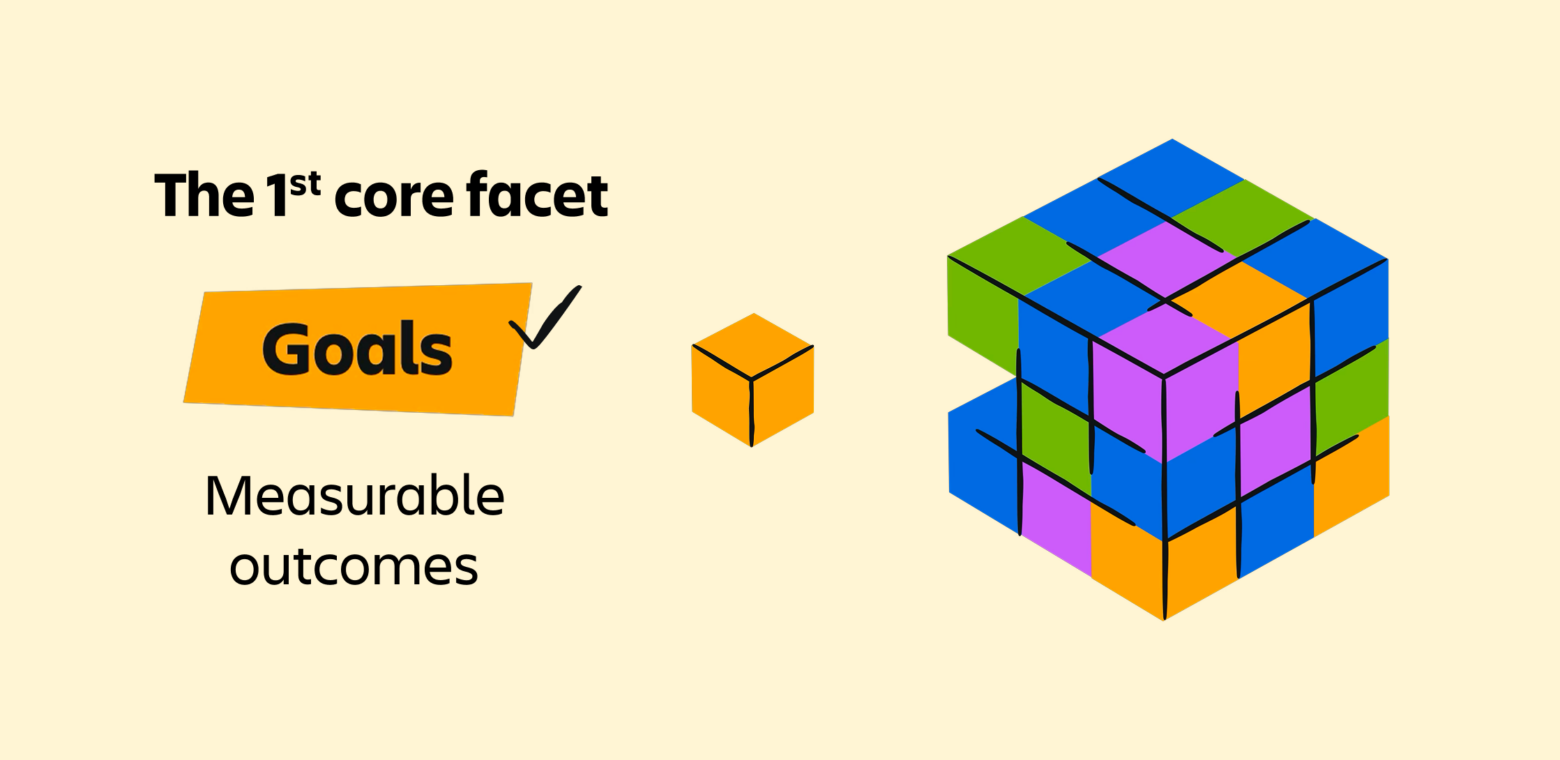How goals support strategic priorities
In today’s discussion, I will explore the concept of goals and their connection to Enterprise Strategy and Planning (ESP). In the initial post of this series, I outlined Atlassian’s perspective on ESP and its six fundamental components.
Atlassian defines Enterprise Strategy and Planning (ESP) as the process of setting and operationalizing strategy through a lifecycle of Strategy, Planning, Execution, and Evaluation, focusing on six core facets:
Only 7% of executives say they can quickly see how each of their teams’ work supports company goals.
– State of Teams 2025*
So, how do goals fit in?
As noted in the team goals, signals, and measures playbook, teams set goals that often concentrate on the outputs more than the project outcomes. By focusing more on the outputs, teams risk a false sense of accomplishment. In other words, it’s difficult to understand whether the outputs that have been completed actually contributed to a project’s goal.
Organizations are no different
Every organization has a strategy. The best way to know if you’re accomplishing that strategy is to have measurable outcomes. Now, whether you call them goals or objectives really doesn’t matter. What matters is that you have people, practices, and technology to capture and manage toward those outcomes. So, what level of confidence do you have in your goal practice?
- Can your organization define clear and measurable goals or objectives and key results (OKRs)?
- Do your goals aggregate up and cascade down effectively?
- Do they actually align with strategy?
- And are all of your goals somehow relationally mapped to all five other Atlassian ESP facets in a meaningful way?
Key Beliefs
A major trend that we’re seeing is that organizations are moving away from business agility as an end in itself and toward strategic planning and goals.
Goals help organizations close several critical gaps, including
- The Strategy-Performance Gap: This is the difference between the desired strategic outcomes and the actual organizational performance. Goals break down the strategy into actionable steps, allowing the organization to measure progress and make necessary adjustments to achieve the desired strategic outcomes.
- The Market-Offering Gap: This refers to the gap between what the market needs and what the organization offers. Goals focused on market research, product development, and customer satisfaction can help close this gap, ensuring the organization remains competitive and relevant.
- The Efficiency-Effectiveness Gap: Organizations can be efficient without being effective (doing things right vs. doing and building the right things). Goals help ensure the organization is both efficient and effective by focusing efforts on activities that directly contribute to achieving the desired outcomes.
- The Innovation-Stagnation Gap: Without clear goals for innovation and growth, organizations can become stagnant. Goals encourage a culture of continuous improvement, experimentation, and adaptation, helping the organization stay ahead of the curve and remain competitive.
- The Customer Satisfaction-Expectation Gap: This is the gap between customer expectations and their actual experience with the organization. Goals focused on customer service, product quality, and communication can help close this gap and improve customer loyalty.
- The Employee Engagement-Performance Gap: Engaged employees are more productive and contribute more to organizational success. Goals can help increase employee engagement by providing a sense of purpose, direction, and achievement. They also help align individual efforts with organizational objectives, increasing buy-in and motivation.
- The Learning-Adaptation Gap: In today’s rapidly changing environment, organizations need to constantly learn and adapt. Goals can facilitate this by encouraging knowledge sharing, experimentation, and continuous improvement efforts. This ensures the organization remains agile and responsive to market changes.
When quantifying gaps, follow standard patterns
From a high level, measure goals from two perspectives, moment in time and over time. In both cases, there is no one-size-fits-all number or best practice. If you are trying to predict something with high accuracy, you’ll need a very low variance to ensure your predictions are reliable. High variance can lead to unreliable results, poor decisions, or even safety risks in some situations. If you’re comfortable with a bit more uncertainty, a higher variance might be acceptable.
Metric
Goal Achievement Rate:
This metric measures the extent to which strategic goals have been met. This can be expressed with the following formula:
[ {Goal Achievement Rate} = ({Actual Value}/{Target Value}) times 100% ]
Where:
- Actual Value is the actual performance or outcome achieved.
- Target Value is the desired or planned outcome set as the goal.
This formula calculates the percentage of the goal achieved, where:
- A result of 100% means the goal has been fully achieved.
- A result greater than 100% means the goal has been exceeded.
- A result less than 100% indicates the goal has not been fully met.
In essence, goals provide a framework for organizational alignment, performance improvement, and sustainable growth. They help bridge the gap between aspiration and achievement, driving the organization towards its desired future state.
What’s next for you
next steps
- Determine if your organization has any of the seven critical gaps listed above.
- Consider whether your organization is capable of defining goals that are clear and measurable, relative to those gaps.
- Evaluate if the goals effectively aggregate up and cascade down.
- Assess whether they truly align with your strategy.
- Ensure that your strategy is fully represented within your pool of goals.
- Measure and report progress of your goals at least monthly.
- Use the positive or negative trends over time of both your achievement rates and variance to provide actionable insights.
- Learn more about ESP and Strategy Collection
- Download the full whitepaper now!
- * State of Teams 2025

